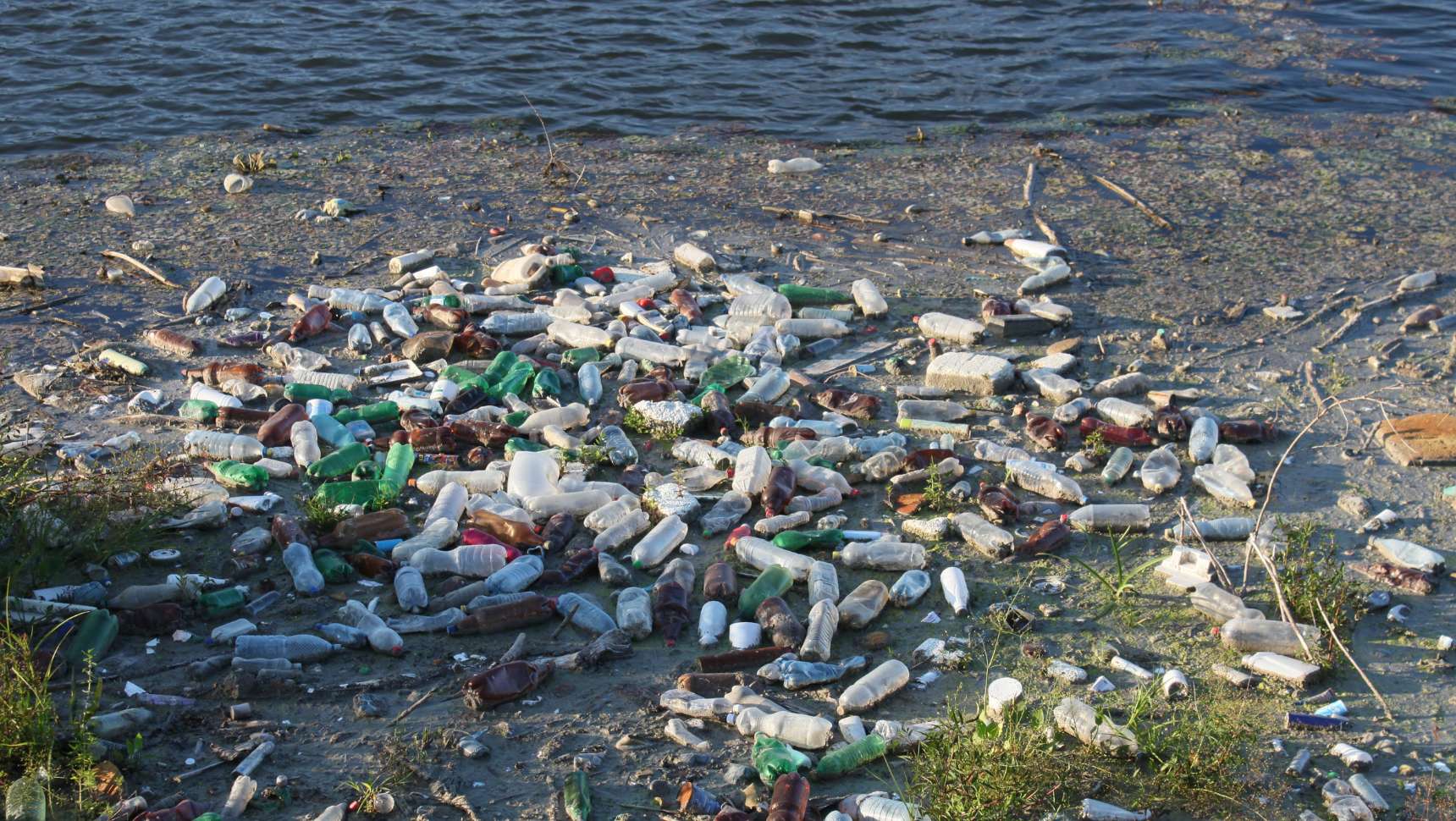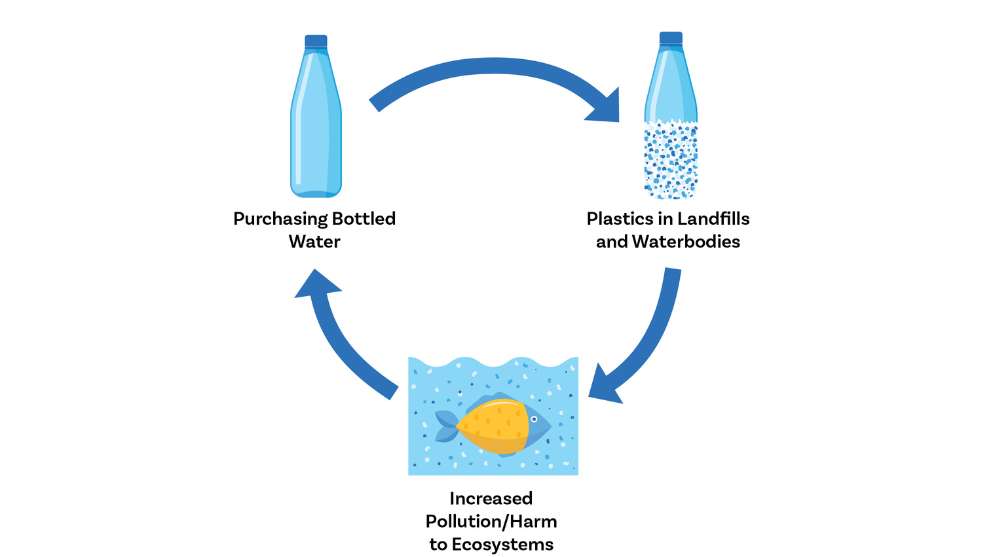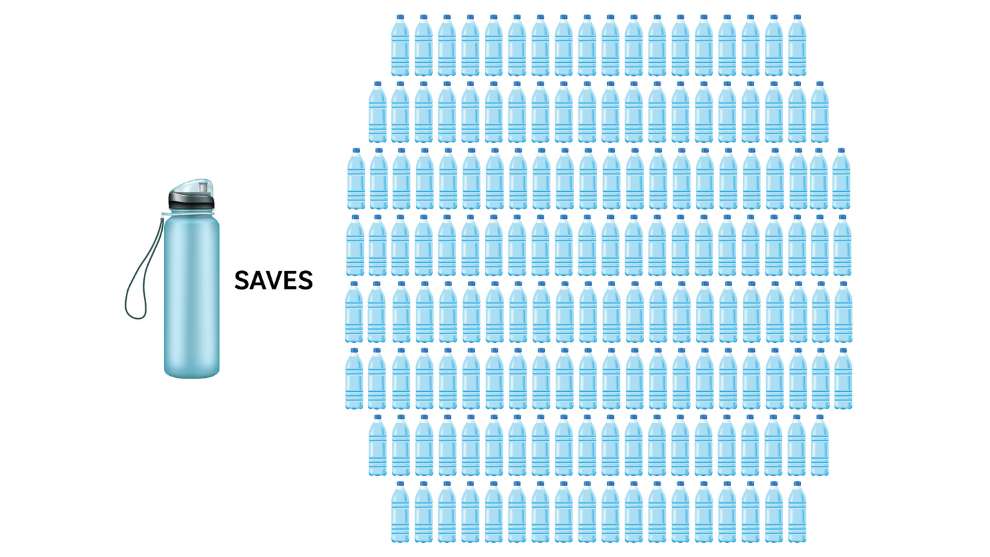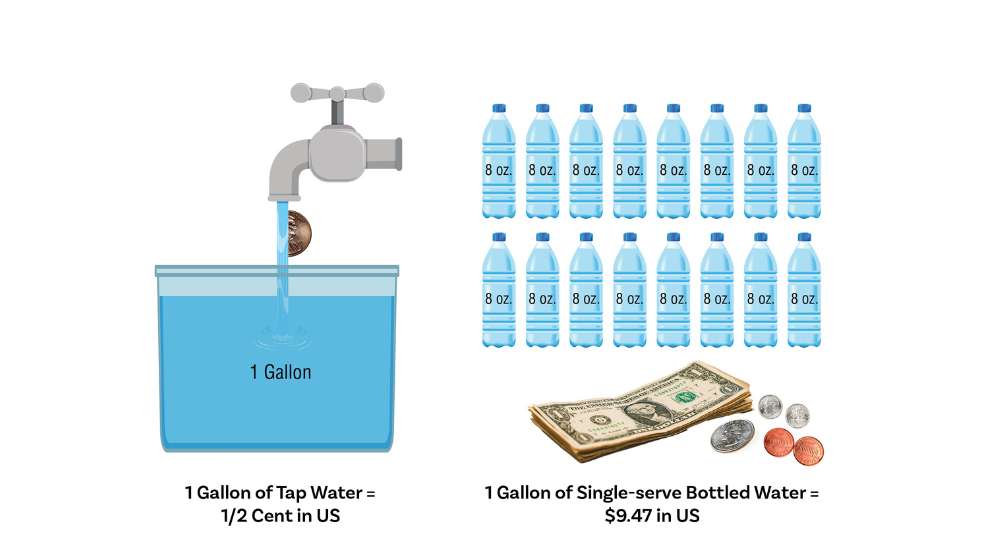A Clear Choice


Americans purchase approximately 50 billion water bottles per year1 . Though some people are diligent and recycle, a drive down nearly any highway provides evidence that there are many people who do not recycle plastics.
Further compounding the crisis is the fact that our current plastics recycling system is not effective for the sheer quantity of plastics nor for certain types of plastics2 and, despite the attempt at recycling, microplastics are being detected in water and food (it is noted that a lot of research still needs to be done on the effects of microplastics)3. We have harmed our environment – that is a fact. But this fact has been manipulated into marketing the idea that bottled water is a healthier and/or safer alternative than tap water. This decades-long trend has put us in a self-sustaining cycle of purchasing water in plastic bottles. The more we believe our drinking water to be dangerous because of our damaged environment, the more bottled water we purchase, which actually leads to a more damaged environment.

I acknowledge that not everyone has equitable access to clean drinking water. In many areas, both globally and nationally, bottled water can be a life-saving resource. But if you live in a region in which drinking water is accessible and safe (and you can check this very easily here in the US: https://www.epa.gov/ground-water-and-drinking-water), I implore you to stop purchasing bottled water. If demand decreases, production will decrease, and less bottles will end up in the oceans and landfills. One person using one reusable water bottle can save 156 plastic bottles annually.1

In 1974 (amended in 1986 and 1996), the Safe Drinking Water Act (SDWA) was passed to protect public health by regulating the nation’s public drinking water supply. The law requires many actions to protect drinking water and its sources: rivers, lakes, reservoirs, springs, and ground water wells. National standards for drinking water are set by the U.S. EPA and state drinking water programs provide oversight. States, or the U.S. EPA acting as a primacy agent, make sure water systems test for contaminants, review plans for water system improvements, conduct on-site inspections and sanitary surveys, provide training and technical assistance, and take action against water systems not meeting standards.4
In the United States, before water reaches your tap, many hard-working professionals have taken methodical steps to ensure your water’s potability. At treatment plants, staff typically follow a four-part process of coagulation/flocculation, sedimentation, filtration, and disinfection.5 Engineers and scientists ensure that these systems are in optimal condition and are constantly developing and refining methodologies as technology advances. Advocacy groups push for stronger regulations as conditions evolve. Conservationists and ecologists work to increase the resilience of our water supplies through protection, conservation, and reuse. This system, supported by these dedicated professionals, ensures that drinking water is safe.
If you need another reason to stop buying bottled water – the cost savings are astounding. The average cost of one gallon of tap water in the United States is half a cent. If you purchase one gallon of bottled water in single-serving 8 oz. bottles, the average cost is $9.47. That is more than a gallon of milk and more than a gallon of gasoline. Bottled water is nearly 2,000 times more expensive than tap water.6

It is National Drinking Water Week. The best way to celebrate this week is to make a choice and a commitment to drink the water that has been safely provided to you. This will keep plastics out of our landfills, off our streets, and out of our waterbodies.
1 https://www.earthday.org/fact-sheet-single-use-plastics/
4 https://www.epa.gov/sdwa/overview-safe-drinking-water-act
5 https://www.npr.org/2016/04/14/473806134/how-do-we-get-our-drinking-water-in-the-u-s
6 https://www.groundwatergovernance.org/how-much-is-the-price-for-tap-water/
We keep up-to-date on developing technologies, emerging concerns, climate projections, and new regulations. Subscribe to be the first to know how these ever-changing industry topics impact you and how we’re responding.
"*" indicates required fields